
Winslow Homer Painting Reproductions 3 of 4
1836-1910
American Realist Painter
94 Winslow Homer Paintings
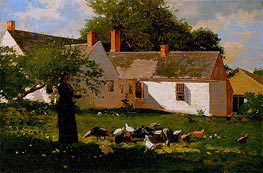
Woman Feeding Chickens and Turkeys c.1872
Oil Painting
$630
$630
Canvas Print
$61.81
$61.81
SKU: HOM-15778
Winslow Homer
Original Size: 31.4 x 46.8 cm
The Clark Art Institute, Massachusetts, USA
Winslow Homer
Original Size: 31.4 x 46.8 cm
The Clark Art Institute, Massachusetts, USA
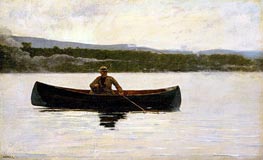
Playing a Fish c.1875/95
Oil Painting
$608
$608
Canvas Print
$61.81
$61.81
SKU: HOM-15779
Winslow Homer
Original Size: 29.7 x 48 cm
The Clark Art Institute, Massachusetts, USA
Winslow Homer
Original Size: 29.7 x 48 cm
The Clark Art Institute, Massachusetts, USA
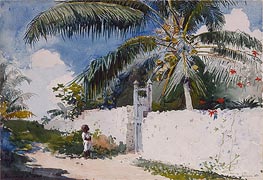
A Garden in Nassau 1885
Paper Art Print
$58.54
$58.54
SKU: HOM-15780
Winslow Homer
Original Size: 36.8 x 53.3 cm
Terra Museum of American Art, Chicago, USA
Winslow Homer
Original Size: 36.8 x 53.3 cm
Terra Museum of American Art, Chicago, USA
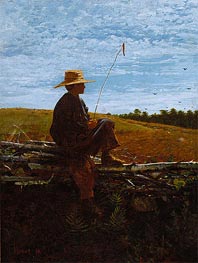
On Guard 1864
Oil Painting
$637
$637
Canvas Print
$61.81
$61.81
SKU: HOM-15781
Winslow Homer
Original Size: 31 x 23.5 cm
Terra Museum of American Art, Chicago, USA
Winslow Homer
Original Size: 31 x 23.5 cm
Terra Museum of American Art, Chicago, USA
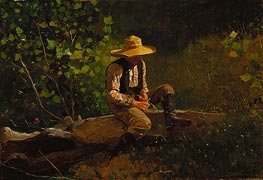
The Whittling Boy 1873
Oil Painting
$758
$758
Canvas Print
$71.36
$71.36
SKU: HOM-15782
Winslow Homer
Original Size: 40 x 57.6 cm
Terra Museum of American Art, Chicago, USA
Winslow Homer
Original Size: 40 x 57.6 cm
Terra Museum of American Art, Chicago, USA
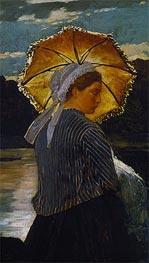
The Nurse 1867
Oil Painting
$626
$626
Canvas Print
$61.81
$61.81
SKU: HOM-15783
Winslow Homer
Original Size: 48.3 x 28 cm
Terra Museum of American Art, Chicago, USA
Winslow Homer
Original Size: 48.3 x 28 cm
Terra Museum of American Art, Chicago, USA
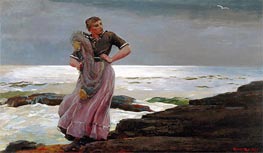
A Light on the Sea 1897
Oil Painting
$1104
$1104
Canvas Print
$61.81
$61.81
SKU: HOM-15784
Winslow Homer
Original Size: 71 x 122 cm
Corcoran Gallery of Art, Washington, USA
Winslow Homer
Original Size: 71 x 122 cm
Corcoran Gallery of Art, Washington, USA
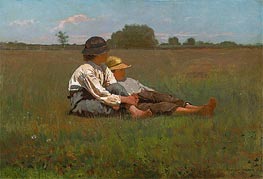
Boys in a Pasture 1874
Oil Painting
$812
$812
Canvas Print
$63.54
$63.54
SKU: HOM-15785
Winslow Homer
Original Size: 40.3 x 58 cm
Boston Museum of Fine Arts, Massachusetts, USA
Winslow Homer
Original Size: 40.3 x 58 cm
Boston Museum of Fine Arts, Massachusetts, USA
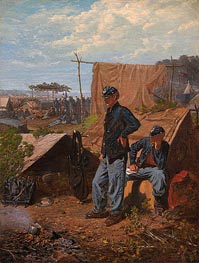
Home, Sweet Home c.1863
Oil Painting
$1059
$1059
Canvas Print
$71.02
$71.02
SKU: HOM-15786
Winslow Homer
Original Size: 54.6 x 42 cm
National Gallery of Art, Washington, USA
Winslow Homer
Original Size: 54.6 x 42 cm
National Gallery of Art, Washington, USA

Sunlight on the Coast 1890
Oil Painting
$1011
$1011
Canvas Print
$61.81
$61.81
SKU: HOM-15787
Winslow Homer
Original Size: 77 x 123.3 cm
Toledo Museum of Art, Ohio, USA
Winslow Homer
Original Size: 77 x 123.3 cm
Toledo Museum of Art, Ohio, USA
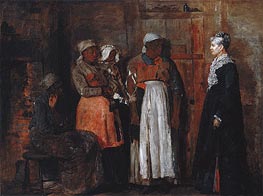
A Visit from the Old Mistress 1876
Oil Painting
$876
$876
Canvas Print
$69.83
$69.83
SKU: HOM-15788
Winslow Homer
Original Size: 45.7 x 61 cm
Smithsonian American Art Museum, Washington, USA
Winslow Homer
Original Size: 45.7 x 61 cm
Smithsonian American Art Museum, Washington, USA

In the Mountains 1877
Oil Painting
$648
$648
Canvas Print
$61.81
$61.81
SKU: HOM-15789
Winslow Homer
Original Size: 60.6 x 97 cm
Brooklyn Museum of Art, New York, USA
Winslow Homer
Original Size: 60.6 x 97 cm
Brooklyn Museum of Art, New York, USA
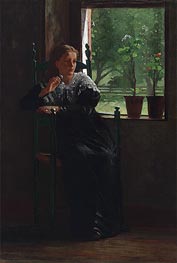
At the Window 1872
Oil Painting
$941
$941
Canvas Print
$63.19
$63.19
SKU: HOM-15790
Winslow Homer
Original Size: 57 x 40 cm
Art Museum at Princeton University, New Jersey, USA
Winslow Homer
Original Size: 57 x 40 cm
Art Museum at Princeton University, New Jersey, USA
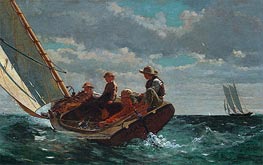
Breezing Up (A Fair Wind) c.1873/76
Oil Painting
$1247
$1247
Canvas Print
$61.81
$61.81
SKU: HOM-15791
Winslow Homer
Original Size: 61.5 x 97 cm
National Gallery of Art, Washington, USA
Winslow Homer
Original Size: 61.5 x 97 cm
National Gallery of Art, Washington, USA

Two Figures by the Sea 1882
Oil Painting
$744
$744
Canvas Print
$61.81
$61.81
SKU: HOM-15792
Winslow Homer
Original Size: 49 x 87.3 cm
Denver Museum of Art, Colorado, USA
Winslow Homer
Original Size: 49 x 87.3 cm
Denver Museum of Art, Colorado, USA
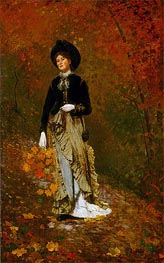
Autumn 1877
Oil Painting
$1120
$1120
Canvas Print
$61.81
$61.81
SKU: HOM-15793
Winslow Homer
Original Size: 97 x 59 cm
National Gallery of Art, Washington, USA
Winslow Homer
Original Size: 97 x 59 cm
National Gallery of Art, Washington, USA
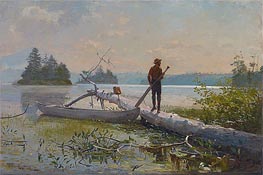
An Adirondack Lake (The Trapper) 1870
Oil Painting
$1106
$1106
Canvas Print
$62.17
$62.17
SKU: HOM-15794
Winslow Homer
Original Size: 48.4 x 75 cm
Colby College Museum of Art, Maine, USA
Winslow Homer
Original Size: 48.4 x 75 cm
Colby College Museum of Art, Maine, USA
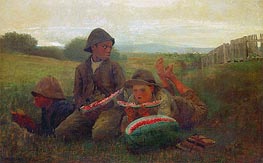
The Watermelon Boys 1876
Oil Painting
$1225
$1225
Canvas Print
$61.81
$61.81
SKU: HOM-15795
Winslow Homer
Original Size: 61.3 x 96.8 cm
Public Collection
Winslow Homer
Original Size: 61.3 x 96.8 cm
Public Collection
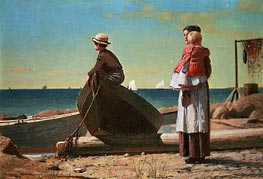
Dad's Coming! 1873
Oil Painting
$608
$608
Canvas Print
$61.81
$61.81
SKU: HOM-15796
Winslow Homer
Original Size: 23 x 35 cm
National Gallery of Art, Washington, USA
Winslow Homer
Original Size: 23 x 35 cm
National Gallery of Art, Washington, USA
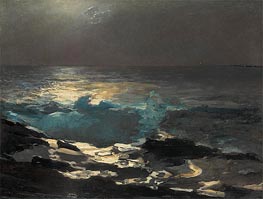
Moonlight, Wood Island Light 1894
Oil Painting
$923
$923
Canvas Print
$71.03
$71.03
SKU: HOM-15797
Winslow Homer
Original Size: 78 x 102.2 cm
Metropolitan Museum of Art, New York, USA
Winslow Homer
Original Size: 78 x 102.2 cm
Metropolitan Museum of Art, New York, USA
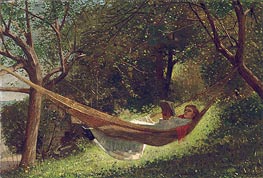
Girl in the Hammock 1873
Oil Painting
$825
$825
Canvas Print
$61.81
$61.81
SKU: HOM-15798
Winslow Homer
Original Size: 33.6 x 50.2 cm
Colby College Museum of Art, Maine, USA
Winslow Homer
Original Size: 33.6 x 50.2 cm
Colby College Museum of Art, Maine, USA
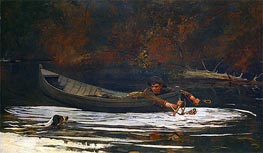
Hound and Hunter 1892
Oil Painting
$1201
$1201
Canvas Print
$61.81
$61.81
SKU: HOM-15799
Winslow Homer
Original Size: 71.8 x 122.3 cm
National Gallery of Art, Washington, USA
Winslow Homer
Original Size: 71.8 x 122.3 cm
National Gallery of Art, Washington, USA

Right and Left 1909
Oil Painting
$894
$894
Canvas Print
$61.81
$61.81
SKU: HOM-15800
Winslow Homer
Original Size: 71.8 x 123 cm
National Gallery of Art, Washington, USA
Winslow Homer
Original Size: 71.8 x 123 cm
National Gallery of Art, Washington, USA
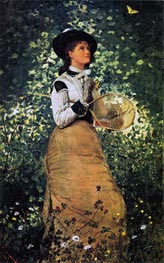
The Butterfly Girl 1878
Oil Painting
$1191
$1191
SKU: HOM-15801
Winslow Homer
Original Size: 94.6 x 61 cm
New Britain Museum of American Art, Connecticut, USA
Winslow Homer
Original Size: 94.6 x 61 cm
New Britain Museum of American Art, Connecticut, USA